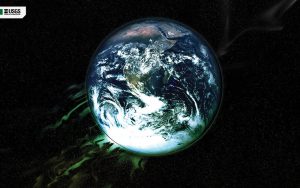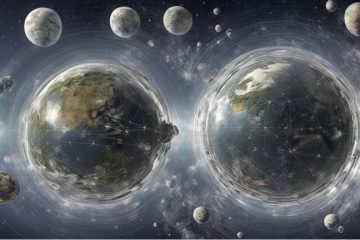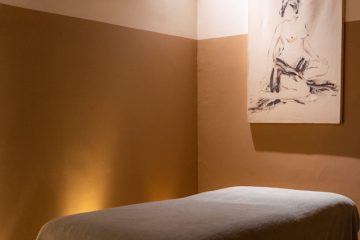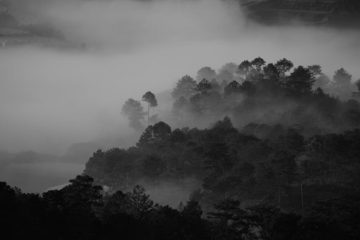Knowing What Is True? Between Science and Belief
By Dion Forster

After a somewhat “rebellious” childhood, I began to feel a strong sense of calling to the priesthood as I approached the end of high school. However, my parents were less convinced of my calling, partly because they were not particularly religious and partly because I was a most unlikely candidate for a life of piety and service. My father said, “Get a real job!” So, I studied engineering but knew I would never become an engineer. I later studied theology and entered the ministry.
Since my sojourn into science, I’ve often wondered about the relationship between science and belief. Popular culture says science and belief do not mix and are perhaps enemies, each trying to disprove the other. However, that was not my experience.
I continued to read science and theology, and eventually completed my first PhD on the intersection of theology and cognitive neuroscience. I was particularly interested in the ways neuroscientists and theologians accounted for the construction of individual identity. My research showed that African understandings of intersubjectivity had some contribution to make to debates on self-validating individual consciousness. Simply stated, if I were to ask you, “who are you?” how would you answer? Asking this question addresses not only notions of truth but also how we know what is true.
I might say, “I am Dion Forster.” However, since there are other persons around the world and throughout history with whom I share this name, you might ask, “which Dion Forster are you?” To answer, I might say “I am the Dion Forster who lives in Cape Town in 2022” or “I am the Dion Forster with brown hair and green eyes.” Or if this were not sufficiently specific, I might also appeal to personal memories or beliefs. “I am the Dion Forster who remembers falling off his bicycle when he was 10 years old” or “I am the Dion Forster who holds African Christian beliefs.”
Each of these claims contains what the American philosopher Beatrice Bruteau calls a relative absolute. First, all of these claims would be true; their truthfulness can be tested and known. However, none of these things fully encapsulates the truth of who this particular Dion Forster is, so each is relatively true. Each of these claims draws upon different forms of knowledge, some of which can be empirically tested (height, weight) while others can be qualitatively evaluated (the detail and veracity of my memories).
If scientists ask, “how can we know what is true?” philosophers and theologians ask, “how can we know what constitutes knowledge?” These question at the intersections of knowledge and truth, belief and science, are particularly evident in arguments on climate change and in the fierce differences between some religious persons and scientists over Covid-19 and vaccination.
Some working at the intersections of science and belief hold that neither science nor belief can fully account for all truth and neither approach has access to everything that counts as all knowledge. The quantum physicist, David Bohm, rightly says that we are unlikely to find a single theory that can account for all of reality: “there can no more be an ultimate form of such thought than there could be an ultimate poem (that would make all further poems unnecessary).”
In Living Between Science and Belief: The Modern Dilemma, Charles Villa-Vicencio engages the history and content of the major debates between science and belief in the Abrahamic religions. He shows how the pendulum between “truth” and “knowledge” has swung between religious fundamentalism and scientism. He concludes that few academics accept the kind of scientific or religious fundamentalism that offers totalizing answers to reality to the exclusion of other perspectives. Examples of this kind of exclusionary, “closed system” thinking are the work of micro-biologist Richard Dawkins and the Creation Research Society. They are both fundamentalists, scientific or religious. While the content of their claims differs, their approaches are similar, each presenting a totalizing explanation of reality based on a closed system of thought that excludes all other forms of possible truth or knowledge.
The integral philosopher Ken Wilber calls such approaches a collapse into “flatland” thinking. The term comes from Edwin E. Abbott’s 1884 novel, Flatland: A Romance of Many Dimensions. It tells of the lives and struggles of various shapes, some of which live in one dimension, others in two dimensions, and still others in three dimensions. Philosophers later adopted the word “flatland” to refer to explanations of reality that, lacking depth and richness, are unable to account for more nuanced understandings and experiences of reality.
For example, in identity studies some theorists collapse into the interior world to explain all of reality (spirituality, psychology, sociology, etc.), while others collapse into the exterior world (biology, neurophysiology, etc.). Wilber suggests that there are at least four primary categories through which we understand reality: the individual interior (our memories, beliefs, etc.), the collective interior (culture, historical values, the social imaginaries that shape language and ways of living), the individual exterior (race, ethnicity, physical features, etc.), and the collective exterior (geography, the built environment, technologies, etc.).
A 14-year-old girl in Southern Africa in the fifteenth century would conceptualize the world very differently from a 45-year-old man in New York in 2022. To give a fuller account of how each understands the world and lives within it, we would need to give as detailed an account as possible of each of the quadrants of knowledge.
Princeton theologian Wentzel van Huyssteen argues that “theology emerges as a reasoning strategy” that is “on par with the intellectual integrity and legitimacy of the natural, human, and social sciences.” Simply stated, religious beliefs and scientific claims both contribute to truth, each using forms of explanatory power.
The success of empirical science in early modernity led some scientists and theologians to opt for “foundationalism,” which suggests that we can know things with irrefutable certainty. However, later discoveries in the post-modern period that questioned previous scientific and philosophical claims led to “non-foundational” approaches to knowledge in which nothing was considered true or certain.
To resolve this dichotomy, van Huyssteen proposes a “post-foundationalist” approach that allows for rational deliberation from a variety of knowledge perspectives and understandings of truth. A post-foundational approach offers the possibility that we might uncover truths without collapsing into the exclusive certainties of foundationalism or into the relativist uncertainties of non-foundationalism. Such an approach overcomes the false dualism that is often presented between science and belief. It suggests that belief is not devoid of forms of reason or truth, and that science cannot dispense with aspects of mystery or a sense of the sacred.
In my work to date, I have argued that scientists and theologians do a disservice when we become uncritically entrenched in positions that are inadequate to account for the complexity and mystery of reality. We should be honest enough to admit that we cannot fully account for the truth and that knowledge itself is a wonderfully varied reality. Not everything that is true can be scientifically weighed and measured. Some things, like love, beauty, and peace, can be known without being quantified. However, scientific discoveries are helping us live fuller lives. They help us to discover what it means to live “closer” to truth.
Science and belief need not be polarized. We can seek to know the truth with greater humility, honesty, and an openness to a variety of approaches. In the end, this benefits not only belief but science.
#
Dion A. Forster is Professor of Ethics and Public Theology at Stellenbosch University, South Africa. He is the author of numerous books and articles in theology and ethics. His research focuses on social ethics, economic ethics, and political ethics. Dion is the director of the Beyers Naudé Centre for Public Theology. See: http://www.twitter.com/digitaldion.
Counterpoint blogs may be reprinted with the following acknowledgement: “This article was published by Counterpoint Navigating Knowledge on 12 January 2022.”
The views and opinions expressed on this website, in its publications, and in comments made in response to the site and publications are those of the author(s) and do not necessarily reflect the views and opinions of Counterpoint: Navigating Knowledge, its founders, its staff, or any agent or institution affiliated with it, nor those of the institution(s) with which the author is affiliated. Counterpoint exists to promote vigorous debate within and across knowledge systems and therefore publishes a wide variety of views and opinions in the interests of open conversation and dialogue.
Photo: “USGS Science in Action” by U.S. Geological Survey is licensed under CC0 1.0




1 Comment
Religion and state need to be in balance to protect democracy in South Africa - MambaOnline - Gay South Africa online · July 21, 2022 at 6:28 PM
[…] the world became increasingly secular and “disenchanted”, the state grew in power and independence from religious control. For some time, there was a sort […]